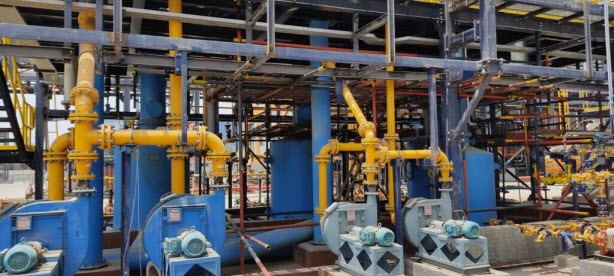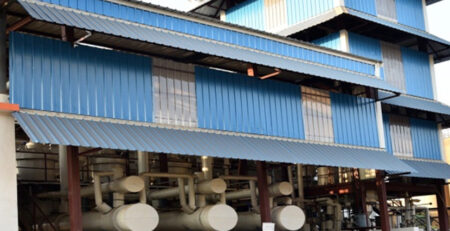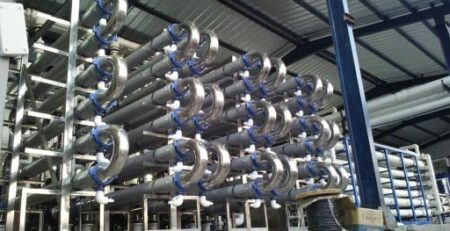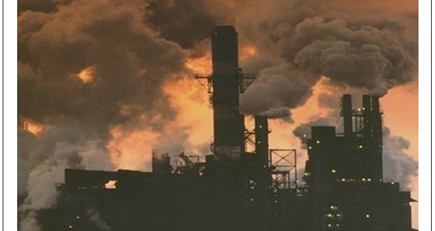Environmental Benefits of Flue Gas Desulfurization Scrubber Technology
The flue gas desulfurization market is dominated by a few key players. These companies use a variety of strategies to gain a competitive edge and increase their market share.
FGD wastewater is highly corrosive and contains many contaminants from coal and limestone, including high concentrations of total dissolved solids (TDS), suspended solids (TSS), chlorides, fluorides, nitrates and nitrites.
Reduced SO2 Emissions
Power plants that use coal to produce electricity are a major source of pollution, particularly sulfur dioxide (SO2). The SO2 in the flue gas is toxic and can damage human health and vegetation. Power plants can reduce their SO2 emissions by installing flue gas desulfurization (FGD) scrubbers. These devices are capable of removing SO2 from the air and converting it into gypsum, a construction material.
The FGD market has experienced significant growth in recent years, thanks to increasing environmental regulations. However, there are several factors that could impede this market’s growth. These include regulatory constraints, coal characteristics, scrubber designs, and layouts. As a result, the power plant industry has opted for energy-efficient FGD systems. However, these can be expensive to operate. In addition, the system requires a large amount of energy for operating pumps and slurry and water pumps.
Depending on the type of FGD system, there are two ways to remove SO2. The most popular method is wet FGD scrubbing. This process involves spraying the flue gas with a mixture of water and limestone (scrubbing slurry). The slurry absorbs the SO2 in the flue gas and neutralizes its acidity. The slurry is also abrasive and can damage downstream equipment. Therefore, the slurry is often made of corrosion-resistant materials and reheated above its dew point to prevent erosion.
In addition to reducing SO2 emissions, FGD scrubbers can also remove particulates from the flue gas. This can improve the performance of electrostatic precipitators. This is important because it will enable them to function better and help meet clean air standards. Furthermore, the FGD market will benefit from new technology that allows the slurry to be recirculated. This will increase the scrubbing surface area and minimize SOx emissions.
Reduced Acid Rain Formation
FGD systems reduce SO2 emissions from coal- and oil-fired power plants by removing sulfur oxides from the flue gas before it is released. These oxides are pollutants that can cause a variety of environmental problems, including acid rain formation and particulate pollution. Sulfur oxides are also harmful to the environment, human health, and animal life. Fortunately, these emissions can be reduced by using FGD technology in fossil-fuel power plants and other facilities that emit sulfur dioxide, such as metal smelters, petroleum refineries, cement and lime kilns, and chemical and mineral processing operations.
In a wet FGD system, the flue gases enter a scrubber spray tower. There, they are sprayed with an alkaline slurry of ground limestone and water. The slurry reacts with the SO2 to remove it from the gas. After the scrubbing process, the slurry is stored in an effluent holding tank.
An alternative to a wet system is a dry scrubbing injection system, which injects powdered reagent directly into the furnace. This method uses less space and requires no byproduct disposal, but it has lower efficiency than a wet system. It can be used for plants up to 1,000 MW in size.
Another method is to use a seawater-based FGD system, which can be used for power plants that are located near the ocean. This system produces no byproducts and can be used for plants up to 1,000 mw in size. However, it does require substantial power for pumping seawater into the scrubber.
While end-of-pipe technologies like FGDs can help reduce SO2 emissions, they do not address global warming. To do that, we must reduce fossil fuel use, either by reducing energy use per unit of economic production or by substituting low- and non-carbon fuels for high-carbon fuels.
While the market for FGD systems has been growing, some factors could impede growth in the future. For example, many of the systems have complex components and processes that consume a lot of energy. In addition, the amount of water needed for scrubbing can be a significant cost factor. To reduce this cost, companies can implement rubber lining for their scrubbers. This coating protects equipment from corrosive and abrasive chemicals in the scrubbing solution.
Reduced Water Pollution
Coal contains a number of chemicals that, when burned, combine with oxygen to form sulfur dioxide (SO2). When released into the air, SO2 can irritate the respiratory systems of people and animals, reduce visibility, and contribute to acid rain formation. It can also kill vegetation, damage water quality, and corrosion metal and concrete structures, reducing their lifespan. Because of its detrimental effects, strict environmental regulations have been put in place that limit SO2 emissions.
To mitigate these issues, plants employ flue gas desulfurization technologies to scrub SO2 from the exhaust of coal-powered power stations. One such technology is the scrubber, which is designed to eliminate SO2 from the exhaust by spraying wet limestone slurry over the polluted flue gas. The limestone reacts with the SO2 in the flue gas to form calcium sulfite or calcium sulfate, which then is collected in a liquid slurry. The slurry is then recycled.
Wet FGD systems can achieve SO2 removal efficiencies of greater than 90%. Dry systems, on the other hand, are able to achieve only about 80%. To improve their efficiency, wet FGD scrubbers can be modified by changing the design of recirculation nozzles, which are used to spray the wet slurry in the scrubber tower. This allows for a larger contact surface between the dirty flue gas and the slurry, improving SO2 removal.
While removing SO2 from the flue gases, a scrubber also reduces other pollutants. These include mercury and nitrogen oxides, which are harmful to human health in both their elemental and oxidized forms. Using electrostatic precipitators or fabric filters, these substances can be captured and removed from the exhaust. It is also possible to capture particulate matter through a scrubber, preventing it from being released into the atmosphere. This helps to reduce air pollution, which can negatively affect the respiratory and cardiovascular systems of people and animals.
Reduced Soil Degradation
The flue gas produced when fossil fuels are burned at a power plant or industrial facility contains many pollutants, including sulfur dioxide and mercury. This waste can affect air quality at a local and regional level if not properly treated or disposed of. Fortunately, several technologies exist for cleaning flue gases, and they all use scrubbers in one form or another. These include wet scrubbing with limestone or lime slurry, spray dry scrubbing using alkaline sorbents, and catalytic reactions that remove nitrogen oxides and sulfur dioxide in addition to other contaminants.
The primary method used to reduce sulfur dioxide is wet scrubbing. This involves passing the flue gas through a scrubber, where a mixture of water and limestone reacts with the SO2 in the gas to produce calcium sulfite and gypsum. The gypsum is then dried to produce a material called FGD gypsum, which is a valuable byproduct of the scrubbing process. This material is used in wallboard and cement production, as well as in soil amendment applications. It is also a source of supplemental phosphates, which are beneficial to agricultural and construction activities.
In some cases, the gypsum can be used to offset the cost of wet scrubbing. However, this is not always economically feasible because it requires a large amount of energy to heat the slurry. The type of fuel a power plant uses also influences the costs. High sulfur fuels are more expensive to scrub, while low sulfur fuels are cheaper.
Another way to reduce SO2 is by removing it from the fuel prior to combustion. This is known as hydrodesulfurization, and it can be achieved through fluidized bed combustion or by adding lime to the fuel during combustion. In either case, the resulting slurries are mixed with water before they are fed into the scrubber.
The most recent technologies to reduce SO2 include advanced wet and dry scrubbing systems. These are designed to remove SO2 and mercury from the exhaust gases of coal-fired plants. Wet scrubbing with limestone and water is a proven technology, and it can be used to achieve high levels of SO2 removal. Dry scrubbing is more effective at removing SO3 than SO2, and it can also remove mercury. Its performance is dependent, however, on the type of coal being used and other operating conditions.












